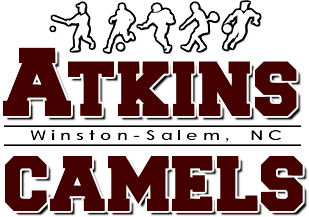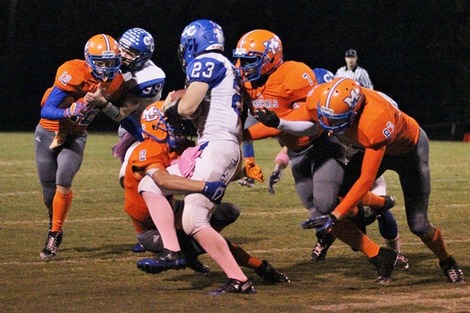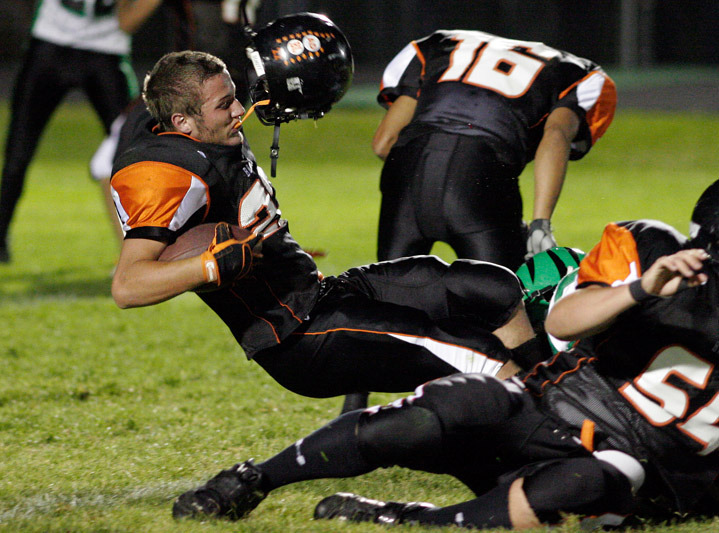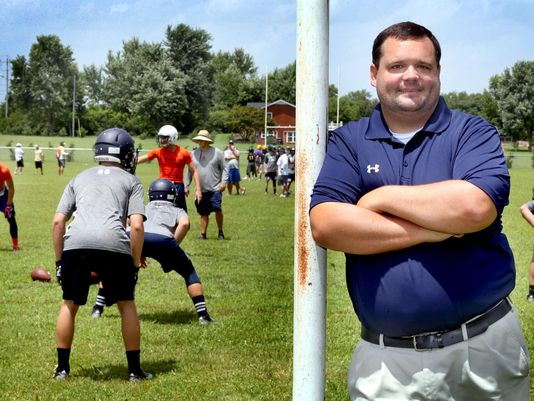
Article reposted from Winston-Salem Journal
Author:
“It’s basically just another set of eyes from a different vantage point, looking for any potential injuries. We’re just trying to prevent as many injuries from going unseen or unnoticed as possible.” Jonathan Reidy Atkins High head athletic trainer
“It’s basically just another set of eyes from a different vantage point, looking for any potential injuries. We’re just trying to prevent as many injuries from going unseen or unnoticed as possible.” Jonathan Reidy Atkins High head athletic trainer
This fall, football games at Atkins High School will feel much more like games held at both the NFL and college levels than they have in years past — at least when it comes to how on-field injuries are detected.
Led by the direction of head athletics trainer Jonathan Reidy and head football coach David Hamlin, the Camels will implement an injury spotter program this season, similar to the “Eyes in the Sky” program the NFL uses, that places people in the press box whose sole responsibility it is to spot player injures.
Unlike the customary high school tradition that places an athletics trainer and one additional physician on the sideline to observe and treat injuries, Atkins will have two supplementary people, including at least one athletics trainer, in the press box watching for injuries and concerning symptoms.
The two additional spotters, which will include Atkins assistant athletic trainer Eddie Stevens, will be in constant communication with Reidy and a physician from Wake Forest Baptist Medical Center, who will be at field-level, through hand-held radios.
If either Stevens or the other high-placed spotter sees a potential injury or anything resembling an injury-like symptom, they will be able to alert Reidy and the WFBMC physician, who will be responsible for pulling the player or players in question off the field for medical examination.
“It’s basically just another set of eyes from a different vantage point, looking for any potential injuries,” Reidy said. “When we have one provider on the sideline they are looking at everything from field level, and if your first player comes off and he needs to be looked at now you’re not watching the field.
“We’re just trying to prevent as many injuries from going unseen or unnoticed as possible. Obviously the big buzz is concussions, but it can be anything that maybe that person in the press box has a different vantage point and can see something that we aren’t able to see on the sidelines.”
While other Winston-Salem/Forsyth County schools currently follow the standard operating procedure of having two on-field trainers and physicians, as well as coaches trained as first-responders, both Reidy and Hamlin eventually expect similar spotter programs to be a budding trend in the coming years.
Reidy, who also works with the Wake Forest sports medicine department, said he does know of at least one North Carolina high school in Henderson County that uses the “Eyes in the Sky” technique.
“It’s just like with coaching — the more eyes you can have from different perspectives the better you’re going to be,” Hamlin said. “Especially in this situation, when a lot is going on and there’s so much focus on winning, recognizing an injury could be a big difference for a kid who shouldn’t be out there.”
For now, Atkins will experiment with the spotter program at both JV and varsity home games before hopefully attending all games in years to come, depending on the program’s success this fall.
Other than needing the necessary full-time personnel, which is a leading reason many other schools have not already employed this additional practice and the reason Atkins will not have high-placed spotters at all of its games, Reidy said the program will cost Atkins less than $200.
The money will be spent on walkie-talkies and a pair of binoculars.
“This is an experiment and we obviously don’t have any objective data yet, but this first season will get us that,” Reidy said. “And if we can just prevent one kid from having a second-impact syndrome, then that one prevention from a catastrophic injury can really be life-changing.”
At the college level, the ACC implemented a similar non-bias medical spotting program this past season that was used for all games involving at least one conference team.
Jeremy Stevens, who works as an athletics trainer at the Cleveland Clinic in Fort Lauderdale, Fla., served as a press-box spotter for the ACC last year and said he is pleased to see the program start to trickle down from the NFL to college and now to high school.
The ACC used one spotter per game in 2016, although Jeremy Stevens expects that number to double this season, mimicking the system the NFL uses.
“This is extremely important, especially at the high school level where you still have brains that are still developing,” Jeremy Stevens said. “It’s been shown that a large number of athletes are having concussions and critical types of injuries that aren’t being reported. This really helps start to alleviate that problem.”







